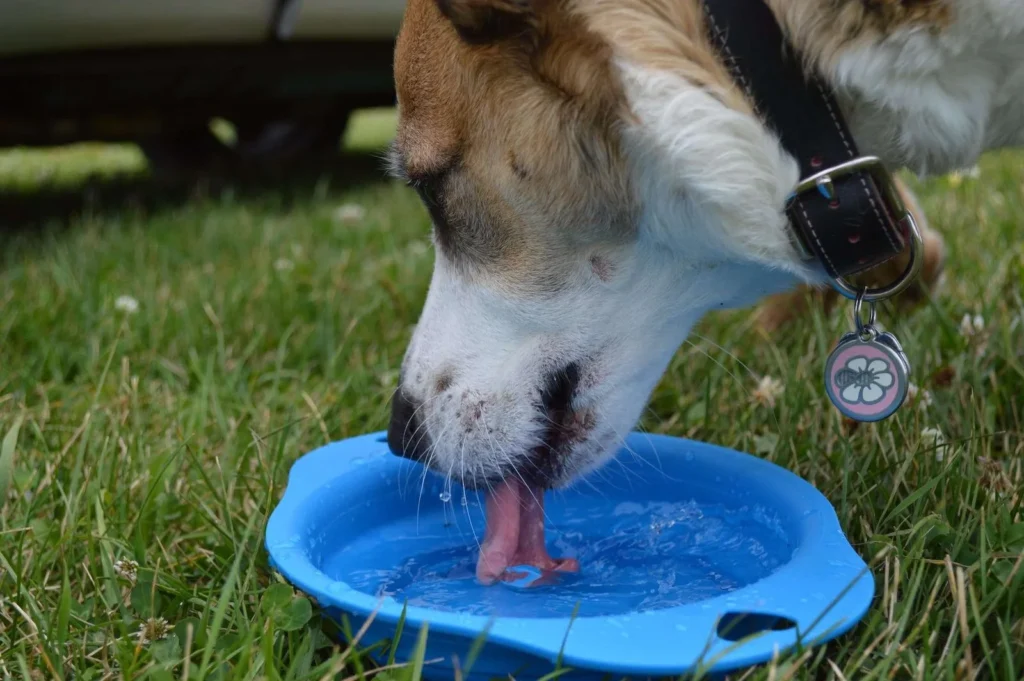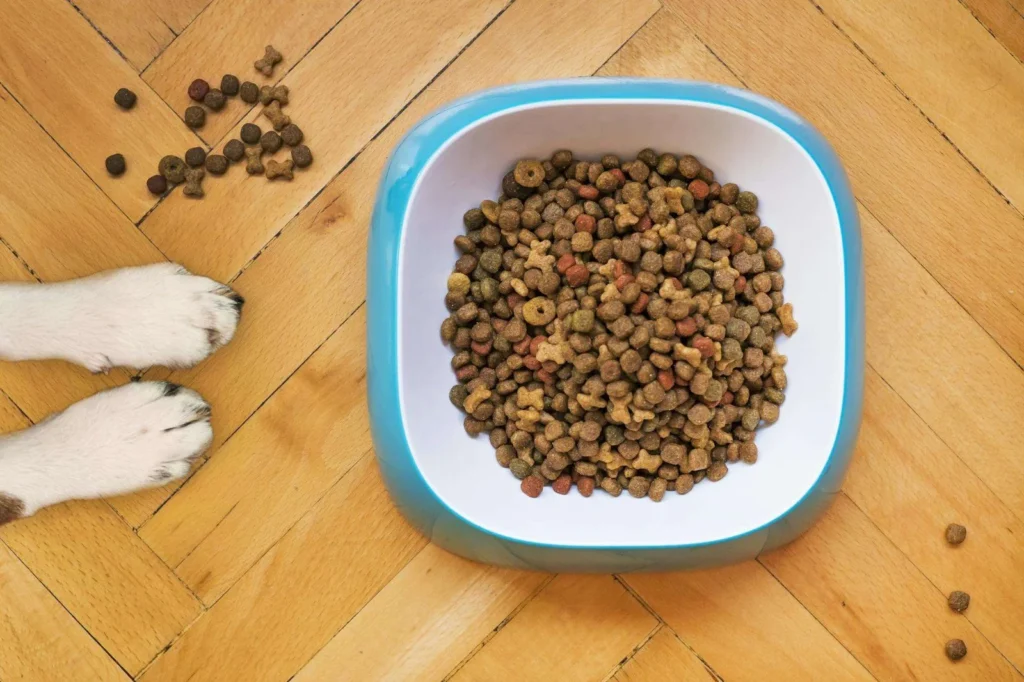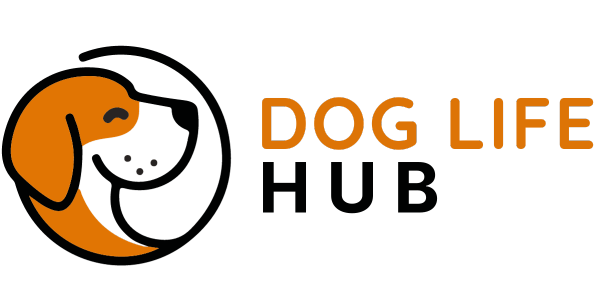Guide to Dog Nutrition: Essential Tips for All Breeds and Ages
Guide to Dog Nutrition:
Introduction:
Good dog nutrition forms the cornerstone of a healthy life for your dog, much like it does for us humans. Understanding what food your dog needs to thrive can sometimes feel overwhelming, given the amount of information available.
This dog nutrition guide aims to demystify your dog’s diet, providing clear, practical advice that applies to all breeds and ages. Whether you’re the owner of a sprightly Jack Russell Terrier or a gentle Great Dane, the information here will help you make informed choices about your dog’s diet.
We’ll explore the basics of a balanced diet for dogs, adapting to the nutritional needs of different life stages, and how to select the best food for your pet. Additionally, we’ll tackle some common myths and misconceptions about dog nutrition, ensuring you can separate fact from fiction.
Remember – as with everything to do with your dog’s wellbeing – if you have any concerns for its health, please consult a vet as soon as possible.
Understanding Your Dog’s Nutritional Needs
The Basics of a Balanced Diet:
A balanced diet is as crucial for our dogs as it is for us. At the core of this balance are proteins, the building blocks of a healthy dog’s body. They support muscle growth and repair, vital for dogs of all ages. Quality protein sources, such as chicken, lamb, or fish, should feature prominently in their diet.
Equally essential are fats. Far from being harmful, fats provide energy and are key for maintaining healthy skin and a shiny coat. Particularly beneficial are omega-3 and omega-6 fatty acids, found in fish oils and certain plant oils. These fats support brain health and reduce inflammation.
Carbohydrates, often viewed with scepticism, actually play a role in a well-rounded dog diet. They provide energy and include fibre, which aids in digestion. However, they should be given in moderation, ensuring they don’t overshadow more crucial nutrients. There are essential fats and proteins – there are no essential carbohydrates.
We mustn’t overlook vitamins and minerals. These are pivotal for a host of bodily functions, from bone health to nerve function. A balanced commercial dog food usually offers these in the right proportions, but a vet might recommend supplements in specific cases.
Lastly, water is a crucial part of your dog’s diet. Fresh, clean water is essential and must be available at all times. It aids digestion, nutrient absorption, and helps regulate body temperature. Tap water is fine. Filtered tap water is better.

Nutritional Needs by Age
As dogs move through different life stages, their nutritional needs change. Puppies, with their seemingly endless energy reserves and rapid growth, require a diet rich in protein and higher in calories. This supports their development and fuels their playfulness.
Adult dogs, in contrast, need a well-balanced diet that maintains their health and supports their lifestyle. Whether a dog is a couch companion or an agility star, the diet must match their energy requirements. For most adults, a balanced commercial dog food suffices, but active breeds might need additional calorie intake.
Senior dogs enter a stage where their metabolism slows down. Here, the focus shifts to maintaining a healthy weight and supporting ageing joints. Diets for seniors often have lower calories but are enriched with supplements like glucosamine for joint health.
| Life Stage | Protein | Fat | Calories | Special Considerations |
| Puppy | High | Moderate | High | Supports growth and development |
| Adult | Moderate | Moderate | Moderate | Matches lifestyle and activity level |
| Senior | Moderate | Low | Low | Supports joint health, prevents obesity |
Understanding these stages helps you tailor your dog’s diet, ensuring they receive the right nutrients at the right time. Next, we’ll explore how to choose the best food for your dog, considering these life stages and the choices available.
Choosing the Right Food for Your Dog
Types of Dog Food:
Selecting the right food for your dog from the options available can be a daunting task. Broadly, dog food falls into several categories: dry food (kibble), wet food (canned), raw diets, and homemade meals. Each type has its own set of benefits and drawbacks.
Dry Food: Kibble is convenient, cost-effective, and good for dental health, as the crunching helps reduce plaque build-up. However, quality varies greatly, so it’s crucial to choose one with high-quality animal protein as the main ingredient.
Wet Food: Canned food is higher in moisture and often more palatable, which can be a bonus for fussy eaters. On the flip side, it’s more expensive and less convenient for storage and portion control.
Raw Diets: These consist of raw meat, bones, fruits, and vegetables. Proponents argue it’s more natural for dogs, but there are concerns about the risk of bacterial contamination and nutritional imbalances. We cannot go into all the arguments from each side of the debate in this article.
Homemade Meals: Preparing your dog’s food allows for complete control over ingredients. However, it requires a good understanding of canine nutrition to ensure a balanced diet.
A combination of these, tailored to your dog’s preferences and health needs, often works best. An adult Labrador might thrive on a mix of dry and wet food, while a senior Chihuahua might do better with a softer, homemade diet.
Reading Dog Food Labels:
Understanding dog food labels is key to choosing quality nutrition. Here, the devil is in the details.
Firstly, look at the ingredient list. Ingredients are listed by weight, so ensure high-quality proteins are at the top. Names like ‘chicken’ or ‘beef’ are preferable to vague terms like ‘meat by-products’ or ‘animal meal’.

Nutritional labels tell you if the food is ‘complete and balanced’, meaning it meets the minimum nutritional standards. This statement also indicates which life stage the food is suitable for, such as puppies, adults, or seniors.
Feeding guidelines provide a starting point for how much to feed your dog based on size and activity level. Remember, these are guidelines; your dog’s needs may vary.
Also, look for a manufacturing date. Freshness matters, as nutrients can degrade over time.
Lastly, be aware of marketing tactics. Terms like ‘gourmet’, ‘premium’, or ‘natural’ are not regulated and often don’t reflect the quality of the food.
Armed with this knowledge, you can navigate the pet food aisle with more confidence, ensuring your dog gets the nutrition they need. But remember, even the best commercial food can’t cover every individual need. Next, we’ll look into special dietary considerations for dogs with specific health conditions or unique dietary needs.
Special Dietary Considerations
Dietary Needs for Different Breeds
The breed of your dog can influence its dietary requirements significantly. Small breeds, like Yorkies or Pomeranians, often have faster metabolisms and may require more calorie-dense food. On the other hand, large breeds, such as Great Danes or Labradors, may benefit from diets that support joint health and help prevent obesity.
For instance, large breed puppies require specific diets that promote steady, healthy growth to prevent joint issues later in life. Similarly, small breeds prone to dental issues might need specially formulated kibble that helps clean teeth.
While most commercial foods cater to all breeds, some brands offer breed-specific formulas. These can be beneficial but are not always necessary. Understanding your dog’s specific needs, such as their energy levels and breed health predispositions, is crucial for making the best dietary choices.
Managing Health Conditions with Diet
Diet plays a pivotal role in managing various health conditions in dogs. For example, dogs with obesity might require a lower-calorie diet, coupled with regular exercise. Always consult your vet before starting a weight loss plan, as rapid weight loss can be harmful.
Dogs with allergies might need a hypoallergenic diet. Common allergens include beef, dairy, wheat, and chicken. An elimination diet, under veterinary guidance, can help pinpoint the culprit.
For conditions like kidney disease or arthritis, therapeutic diets can be beneficial. These are formulated to manage specific health issues and are often prescribed by vets.
Remember, while diet can aid in managing health conditions, it should complement medical treatment, not replace it. Regular vet check-ups are crucial for monitoring your dog’s health.
Next, we will provide practical tips for feeding your dog, ensuring you can apply this knowledge effectively in your daily routine.
Practical Tips for Feeding Your Dog
Feeding your dog correctly is about more than just choosing the right food. How, when, and how much you feed are equally important.
- Consistency is Key: Dogs thrive on routine. Feed them at the same times every day and in the same place. This helps with digestion and can prevent behavioural issues.
- Portion Control: Overfeeding is a common issue. Follow the feeding guidelines on your dog food’s packaging as a starting point, but adjust based on your dog’s activity level and body condition. Your vet can help you determine the ideal portion size.
- Slow Down Fast Eaters: Some dogs eat too quickly, which can lead to digestive issues or bloat, especially in larger breeds. Slow feeder bowls or puzzle feeders can help pace their eating.
- Fresh Water: Always provide access to fresh, clean water. Change it regularly and ensure it’s available after meals and exercise.
- Treats in Moderation: Treats should only make up a small percentage of your dog’s daily calorie intake. Opt for healthy options like carrots or apple slices.
| Dog Size | Feeding Frequency | Portion Size |
| Small | 2-3 times a day | Small portions |
| Medium | 2 times a day | Moderate portions |
| Large | 1-2 times a day | Larger portions |
Remember, these are general guidelines. Each dog is unique, so tailor the schedule to suit your dog’s needs.
In the final section, we’ll list ingredients to avoid in dog food, helping you steer clear of potentially harmful substances.
Ingredients to Avoid in your Dog’s Diet
When choosing dog food, it’s just as important to know what to avoid as it is to know what nutrients are necessary. Here are some ingredients commonly found in dog foods that are best avoided:
- Artificial Preservatives: Such as BHA, BHT, and ethoxyquin. These can be harmful in the long term. Go for natural preservatives like tocopherols (vitamin E) or ascorbic acid (vitamin C)
- Artificial Colours and Flavours: These additives offer no nutritional value and are used purely to make the food more appealing to humans, not dogs. A dog couldn’t care less about his or her meal presentation!
- Excessive Fillers: Ingredients like corn and soy are often used as fillers. They provide little nutritional value and can lead to allergies and digestive issues in some dogs.
- By-Products and Meat Meals: While not all by-products or meals are bad, low-quality ones can be. They are often made from rendered parts of animals that aren’t suitable for human consumption.
- Sweeteners: Avoid added sugars and sweeteners. They can lead to obesity and dental problems.
The above is by no means an exhaustive list of foods to avoid giving your dog. Other foods a dog should not eat include: Onions, Chocolate, Some nuts, Caffeine, Alcohol , Grapes, Raisins, Avocado and more.
Never feed your dog a food item if you’re not sure that it’s safe – consult a vet if in doubt!
Thank you for reading! If you have any comments, please leave them below – we’d be happy to hear from you.
Knowing how important water is to good dog nutrition, you might be interested in a video which shows how dogs drink water.







